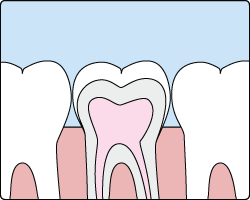
Sealants

Sometimes brushing is not enough, especially when it comes to those hard-to-reach spots in your child’s mouth. It is difficult for a toothbrush to reach between the small cracks and grooves on teeth. If left alone, those tiny areas can develop tooth decay. Sealants give your child’s teeth extra protection against decay and help prevent cavities.
Dental sealants are plastic resins that bond and harden in the deep grooves on the tooth’s surface. When a tooth is sealed, the tiny grooves become smooth, and are less likely to harbor plaque. With sealants, brushing becomes easier and more effective against tooth decay.
Sealants are typically applied to children’s teeth after their permanent teeth have erupted as a preventive measure against tooth decay. It is more common to seal “permanent” teeth rather than “baby” teeth, but every patient has unique needs, and the dentist will recommend sealants on a case-by-case basis.
Sealants last from three to five years, although it is fairly common to see adults with sealants still intact from childhood. A dental sealant only provides protection when it is fully intact so we will monitor at regular exams and may need to re-seal as normal wear and tear occurs. To keep sealants intact, it's best to avoid chewing on ice or biting into hard candies that can chip the sealant material away.



 Website Powered by Sesame 24-7™
Website Powered by Sesame 24-7™